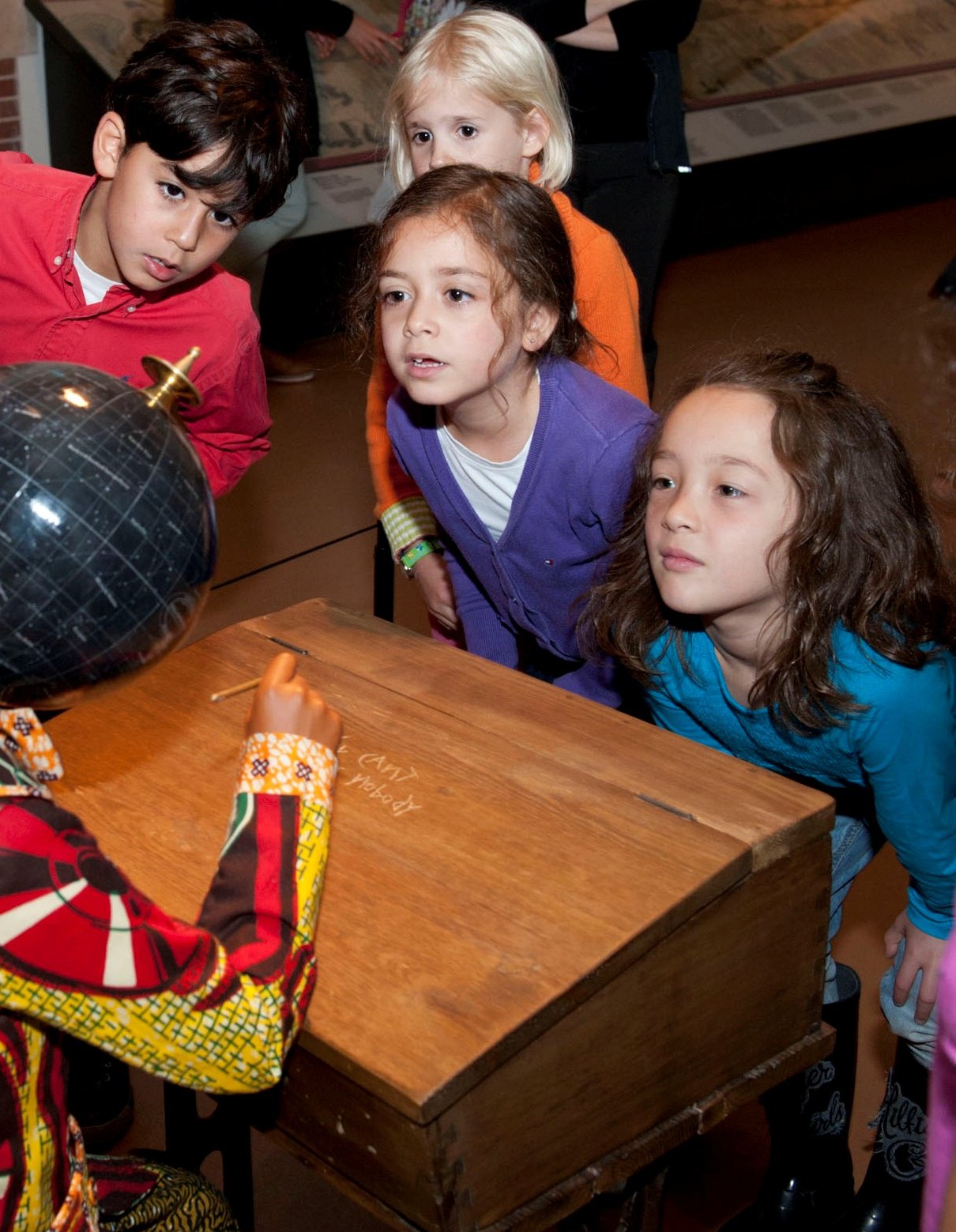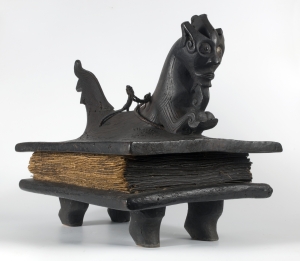Originally posted on Museum Questions:
Field Trips that Teach Thinking Skills
A number of people have reached out to me to share ways in which they, too, are exploring new approaches to school visits to museums. Some of them have generously agreed to write guest posts to share their ideas.
The first of these guest posts is from Claire Bown, a freelance museum educator based in Amsterdam. Claire started her own company, Thinking Museum, in 2013. Claire designs innovative learning activities, workshops and training for museums and heritage organizations, and specializes in the use and application of Visible Thinking in the museum environment.
In order to mine these guest posts for ideas related to the bigger question – “What if we tried a whole new approach?” – I have added a few of my own thoughts at the end of the post, in italics.
In 2011 I joined the Tropenmuseum in Amsterdam with the aim of creating a new English language primary school programme for a growing number of international schools in the Netherlands. These schools, free from the constraints of nationally imposed curricula, have long been able to embrace new and innovative ways of learning and teaching. From the outset, therefore, it was important to develop a programme that linked not only to what was being taught in international schools but also and, more importantly, to how it was being taught.
Indeed, there is a great deal of emphasis on the ‘what’ of museum learning: the content. For school groups, especially, there is still a strong need to cover and provide distinct content created to link to school curricula in order to appeal to teachers and school authorities. Whilst this content-based approach certainly has its benefits, defining museum school programmes by their ability to link to curricula limits the potential of museum educational experiences. For my part, I was interested in developing a programme that supplemented learning and complemented the curriculum and worked throughout the project in partnership with teachers from four international schools. These teachers were an integral part of the research and development on the programme and dedicated considerable time and energy to discussing and piloting the new programme.
On the basis of results from research and focus groups, a new programme was developed based on a common theme of stories and storytelling. However, Stories around the World, as it was christened, was not a content-led programme but one that was guided by it. The main focus was to let students slowly explore and discuss objects for themselves using elements of Visible Thinking as a structure to guide their thinking and to help them practise and develop certain skills, such as careful observation, thoughtful interpretation and considering different viewpoints.
Visible Thinking is an initiative developed over a number of years by researchers at Harvard’s Project Zero in collaboration with various schools. At the heart of Visible Thinking are several practices that help to achieve these goals – such as thinking routines. These routines, originally designed for the classroom, are flexible mini-strategies that we adapted for use in the museum. They provide a structure for student-led discussions and encourage the exploration of ideas and also help to spark curiosity and provoke debate about the Tropenmuseum’s extensive collection. Each different routine encourages certain types of thinking – for example, observing and describing, reasoning with evidence, making connections and even wondering.This allows different types of thinking routines to be used easily around the museum for different objects and in a variety of educational programmes. In Stories around the World we used a mixture of historical objects, such as The Great Pustaha, with contemporary art objects and sculpture, such as Yinka Shonibare’s Planets in my Head: Literature.
The thinking routines trigger lively discussion facilitated by a museum teacher who encourages multiple interpretations from all group members. The process of using a routine also helps to teach students to work collaboratively and to listen respectfully to other student’s opinions. This is an inclusive method that grants even the quietest and most reticent of students the confidence to share their thoughts.
The programmes were launched in 2012 and have been enthusiastically supported by international schools. We discovered fairly quickly that thinking routines have a broad application within a range of subject and age group areas across the museum and two further educational programmes have been created for Dutch primary and high schools. Thinking routines have also been incorporated into adult programming and special events like Museum Night. Museum docents, once trained in using this method, start to incorporate the routines independently and flexibly into other areas of their work with other age groups and types of programmes. These routines can be easily applied in many different types of museums – not just art museums – to target and develop a wide range of thinking skills and promote engagement and curiosity.
When developing a skills-based programme for schools, it is important to manage teacher expectations from the outset and to build strong partnerships and collaborations with schools that can then understand and support the way the educational programme works. Teachers are often surprised (and sometimes even disappointed) that the students will only explore 3-4 objects in around 1.5 hours. Attitudes and assumptions change once teachers have experienced how the programme works in a completely different way to content-led programmes. Educational promotional materials and the museum website and/or blog should be used to their full advantage in explaining the benefits that the students will gain – that is, valuable skills that can be transferred to other locations and contexts.
Ideally, more research needs to be undertaken as to how many schools and students are taking these skills and routines back into the classrooms or their everyday lives and using them again. However, there are numerous possibilities for extending the learning possibilities further and to other contexts. Museums offer a different learning experience from the school environment and as such should not duplicate the learning that takes place there, but be duty-bound to offer a broader range of experiences for students demonstrating the full potential of what museum learning truly has to offer.
For educators who are offering and promoting programs that link to the school curriculum, thinking routines offer an alternative which may be attractive to teachers. For those who have designed programs that teach skills, thinking routines may support what you are already doing.The use of thinking routines during field trips is interesting for a number of reasons:
- If students know what to expect, it may be easier to create a specific culture and community in a short time. Ron Ritchhart of Project Zero wrote about this in the Journal of Museum Education in 2007. Claire has written about this on her own blog, here.
- These routines suggest a number of skills, or – better termed – habits of thought that we might consider teaching students in the museum. In this way, they support a broader exploration of possible goals for school visits to museums.
- I wonder whether thinking routines might offer museum educators strategies for ensuring that conversations are rigorous – open, but not so open that every answer is considered equal. This is a question many of us grapple with: How do we teach students what good, rigorous interpretation looks like, in the context of constructivist educational approaches? (See the post When is Inquiry with Art Philosophical Inquiry? for another approach to that.)
- Thinking routines, like Visual Thinking Strategies, are routines that teachers can use in their own classroom. This allows museums to work with teachers to create bridges between museum and school time, deepening impact.


